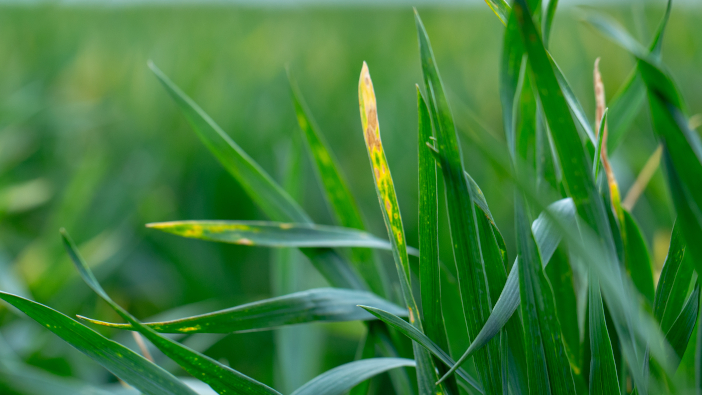Septoria is not getting any easier to control and the protectant spray timing is becoming more critical, advises a leading independent agronomist ahead of the new season. Despite the slow start to 2021, shocking amounts of the disease were seen in crops by June and July, says Jock Willmott of Ceres Rural, who notes that a combination of factors contributed to the Septoria explosion.
“Many were disappointed with their eventual results in 2021, despite new chemistry being widely available and great expectations surrounding its use,” he commented. “The learnings from such a difficult year are useful as we start to formulate strategies for this season – but it’s always important to be vigilant and adapt your actions to local conditions, rather than sticking rigidly to a plan.”
He notes that weather delayed T2 spray applications at reduced fungicide rates were partly to blame last year, while the appearance of the Cougar strain of Septoria saw certain varieties succumb unexpectedly to the disease.

“Eradicant activity was lacking where low rates were used at T2,” explained Mr Willmott. “There was some complacency following the slow start to the season and cutbacks made at the earlier spray timings, so any problems only emerged after the rain arrived in May.”
Older, cheaper chemistry also struggled, having been steadily declining in efficacy in line with the development of less sensitive Septoria populations. “It was a reminder about the importance of varying fungicide mixes and avoiding the use of single active ingredients.”
Wheat varieties with Cougar parentage were another contributing factor, after strains of Septoria emerged that were able to infect those varieties – most of which had previously had good resistance ratings.
“It took over very fast,” Mr Willmott said. “The varieties concerned have now had their septoria ratings revised, with most seeing a drop for this coming year.”
For 2022, Mr Willmott says it’s important to recognise where varieties are breaking down to disease and that older chemistry is less effective. “With that in mind, growers need to know that there’s a clear rate response when using Revystar, which is especially important with late applications.”
The new fungicide on the market for this year, Univoq, appears to offer more dose flexibility and greater persistence, he added. His advice is to use a T0 of 125g of tebuconazole if rust needs controlling and then apply a robust T1 of either Revystar or Ascra at 1-1.2l/ha, only adding in the multi-site folpet if it’s wet.
At T2, he prefers Univoq for its greater persistence, again with folpet in wet conditions. The T3 spray will depend on the intended market, with feed wheat getting a cheaper rust top up and ear disease treatment, while milling wheat should receive a more robust spray including prothioconazole.
“There are plenty of unknowns ahead of the new season and appropriate spend will be important,” concluded Mr Willmott. “While both commodity prices and input costs have gone up significantly, the response to fungicides remains high and many crops are full of potential.”


